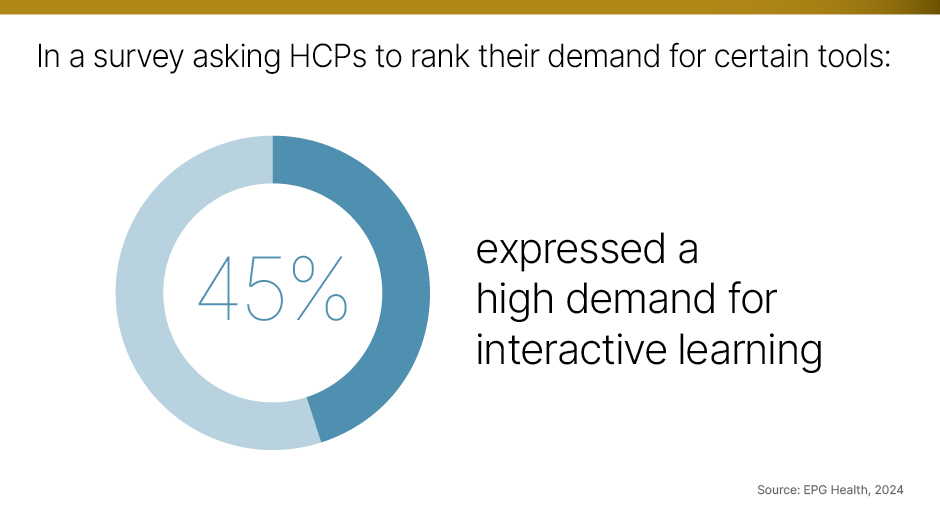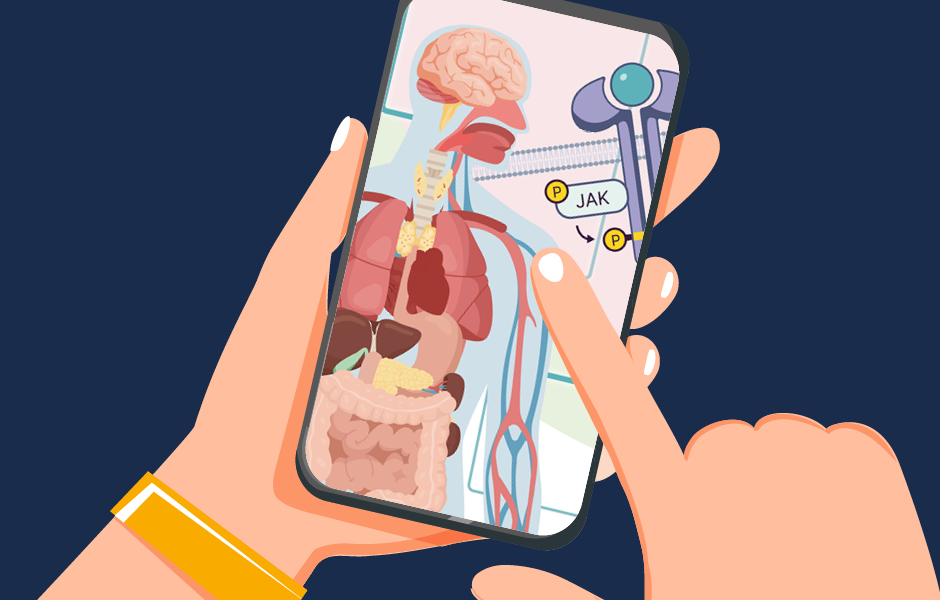It’s time to think outside the box when it comes to medical education. A 3D approach allows pharmaceutical companies to share the latest medical breakthroughs in a more dynamic and engaging way, through interactive elements and more
Words by Isabel O’Brien
In the ever-evolving landscape of medical education, interactive 3D content is an emerging horse in the race. It is a fresh and engaging way for pharmaceutical companies to educate healthcare professionals, and a way to set new standards for effective learning and engagement.
To keep up, companies should consider working with partners such as EMJ to create interactive 3D articles that are as much about customer experience as they are about actionable clinical insights.
Be different with design
In today’s digital age, healthcare professionals expect more digestible ways to stay up to date with the latest medical advances. EPG Health research shows a high demand for short-form, interactive, visual and easy-to-digest content, with 45% of healthcare professionals reporting a significant appetite for interactive content in particular.
One junior doctor, Dr Azmain Chowdhury, MD, NHS, told EMJ GOLD: “A lot of the content I’ve seen from pharma is very corporate in style.” He felt that communications weren’t designed to “really engage people”. Healthcare professionals are looking for content that is not only informative, but that grabs their attention and works hard to hold it.
Bring research to life
The dynamic nature of 3D content, with clickable carousels, living percentages and interactive data visualisations, provides a more effective and immersive learning experience. This is particularly valuable in the rapidly evolving healthcare sector, where understanding complex product information is critical, and busy HCPs have less time than ever to absorb new information.
“As a doctor everyone knows that circumstances dictate our time and we are under pressure from multiple directions,” says Professor Jonathan M Sackier, Host, the EMJ Podcast. “However, above all else, we are consumers when it comes to information and how refreshing to see innovation come to the delivery of medical education. We have had to endure boring text formats for ever and now, with this platform, I feel like we can participate in the digital revolution.”
Features such as expandable charts, clickable data points and layered information allow complex topics to be understood quickly without overwhelming users with excessive text. For example, an interactive chart can summarise key drug interactions in seconds, with the option to click for more detailed information if required.
“These approaches bring data to life. As a clinician, my mind works in 3D and this interactive content resonates with how I see the world. When a surgeon operates, we process information in 3D, not text… It is the same for doctors of all disciplines,” Prof Sackier adds.

Cater to different learning styles
This approach also caters to different learning styles, facilitating a deeper understanding of medical advances. While some people prefer text-based learning, multiple studies have found that 65% of the population are visual learners who benefit from seeing information. Therefore, interactive articles can lead to higher retention rates and a better user perception of digital content, helping to build trust and credibility between customers and the industry.
“This is so important, and a factor that those sponsoring or preparing educational content often fail to recognise. First, different specialisms by their very nature, attract people of different personalities. And age impacts what one wants to see and how to see – or hear – it. And as individuals it is so nice, so respectful, that here we have content that allows us as doctors to choose what we want to see, and how we want to see it,” emphasises Prof Sackier.
This is crucial as 80% of healthcare professionals say they do not always trust digital content provided by pharmaceutical companies, according to a survey by Graphite Digital published earlier this year, showing there is room for improvement.
Make valuable returns
But what about the return on investment? Investing in 3D, interactive content has the potential to deliver significant returns by increasing engagement and retention with proven success.
Evidence shows that companies using this technique have seen an 80% increase in time spent with content. It is also possible to achieve a 10-fold increase in click-throughs. Clearly, users will stay longer and click more if an article has additional interactivity, making this type of content a smart investment for those looking to create unique and impactful medical education.
“Interactive articles not only lead to better informed decision-making, but also promote higher retention rates and satisfaction among users, which are critical for building trust, credibility and expanding market share,” says EMJ’s 3D technology partner. In terms of market share, this is a relatively new concept in medical education, making early adopters true trailblazers in the field.
By meeting the diverse needs of healthcare professionals, making good use of their limited time and providing a measurable return on investment, 3D content could revolutionise the dissemination and retention of medical information. As the digital landscape continues to evolve, embracing these innovative formats will be critical for companies looking to stay ahead of the pack.









